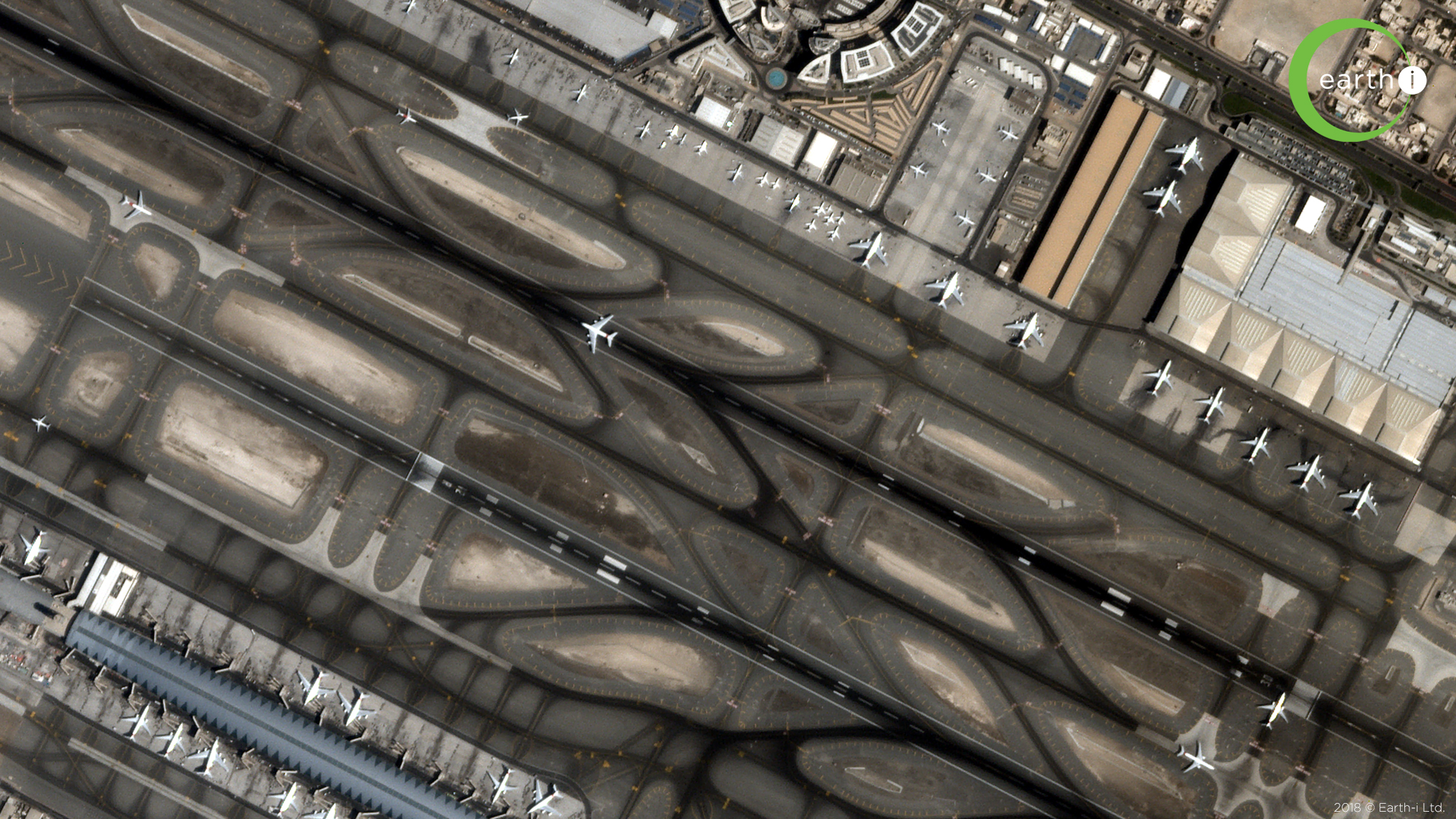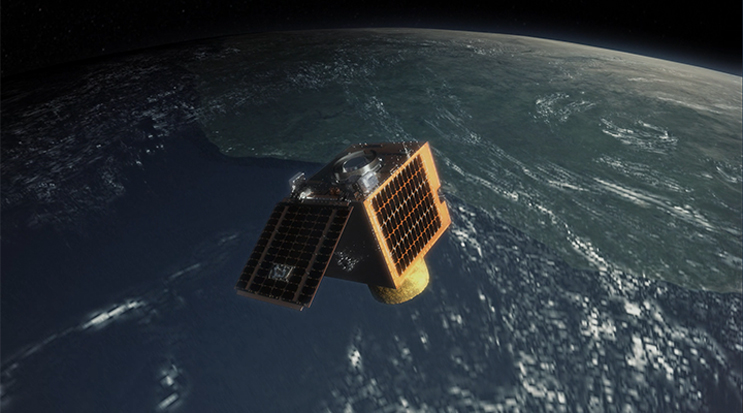
This Earth-i Small Satellite's 1st Color Video of Earth from Space Is Amazing
COLORADO SPRINGS, Colo. — The British Earth-imaging company Earth-i has released its first full-color video of Earth from space taken by its commercial satellite VividX2, which launched in January.
The color video includes clips of different locations around the globe from what Earth-i calls "the world's first commercial satellite able to provide full-colour video of life on Earth." Those views include airplanes in motion at Dubai International Airport; cars driving in Buenos Aires, Argentina; and a ship leaving port in Trondheim, Norway. [See Earth From Space: Classic NASA Photos]
"Commercial color video from space represents a major breakthrough for our industry and a world first," Earth-i CEO Richard Blain said in a statement. "This initial footage shows what is now possible — with more videos being acquired every day. The depth and quality of data we can now acquire takes Earth Observation-based big data analytics to a new level. The way we capture video allows for a broader range of contextual insights to be derived than is possible with traditional still imagery."

Earth-i unveiled the new video here Monday (April 16) at the 34th Space Symposium, where the company is demonstrating the VividX2 satellite's ability to capture up to 2 minutes of video of a target with its ultra-high-definition camera as it flies overhead.
VividX2 weighs about 220 lbs. (100 kilograms) and measures roughly 1 cubic meter (35 cubic feet). It orbits Earth at an altitude of nearly 314 miles (505 kilometers) and a speed of about 15,658 mph (25,200 km/h). The satellite launched into orbit on Jan. 12 as one of 31 payloads on an Indian Polar Satellite Launch Vehicle.

Fourth dimension: motion and time
According to Earth-i's statement, VividX2's capabilities include the following:
- "The provision of high definition images and color video with resolutions better than one meter for any location on Earth.
- "The ability to capture and analyze moving objects such as vehicles, vessels and aircraft in Ultra High Definition color video.
- "Revisiting the same location multiple times per day with agile satellites that can be pointed to image specific areas of interest and acquire high-frame-rate imagery.
- "Rapid tasking of satellites to take images or video, and fast data download within minutes of acquisition. Delivering additional contextual depth of information from motion and time – the 4th dimension."
The current VividX2 mission is the product of a collaboration of Earth-i, the U.K. Ministry of Defence, the U.K. Defence Science and Technology Laboratories and U.K.-based company Surrey Satellite Technology Ltd.
Get the Space.com Newsletter
Breaking space news, the latest updates on rocket launches, skywatching events and more!
Leonard David is author of "Mars: Our Future on the Red Planet," published by National Geographic. The book is a companion to the National Geographic Channel series "Mars." A longtime writer for Space.com, David has been reporting on the space industry for more than five decades. Follow us @Spacedotcom, Facebook or Google+. This version of the story published on Space.com.
Join our Space Forums to keep talking space on the latest missions, night sky and more! And if you have a news tip, correction or comment, let us know at: community@space.com.

Leonard David is an award-winning space journalist who has been reporting on space activities for more than 50 years. Currently writing as Space.com's Space Insider Columnist among his other projects, Leonard has authored numerous books on space exploration, Mars missions and more, with his latest being "Moon Rush: The New Space Race" published in 2019 by National Geographic. He also wrote "Mars: Our Future on the Red Planet" released in 2016 by National Geographic. Leonard has served as a correspondent for SpaceNews, Scientific American and Aerospace America for the AIAA. He has received many awards, including the first Ordway Award for Sustained Excellence in Spaceflight History in 2015 at the AAS Wernher von Braun Memorial Symposium. You can find out Leonard's latest project at his website and on Twitter.
